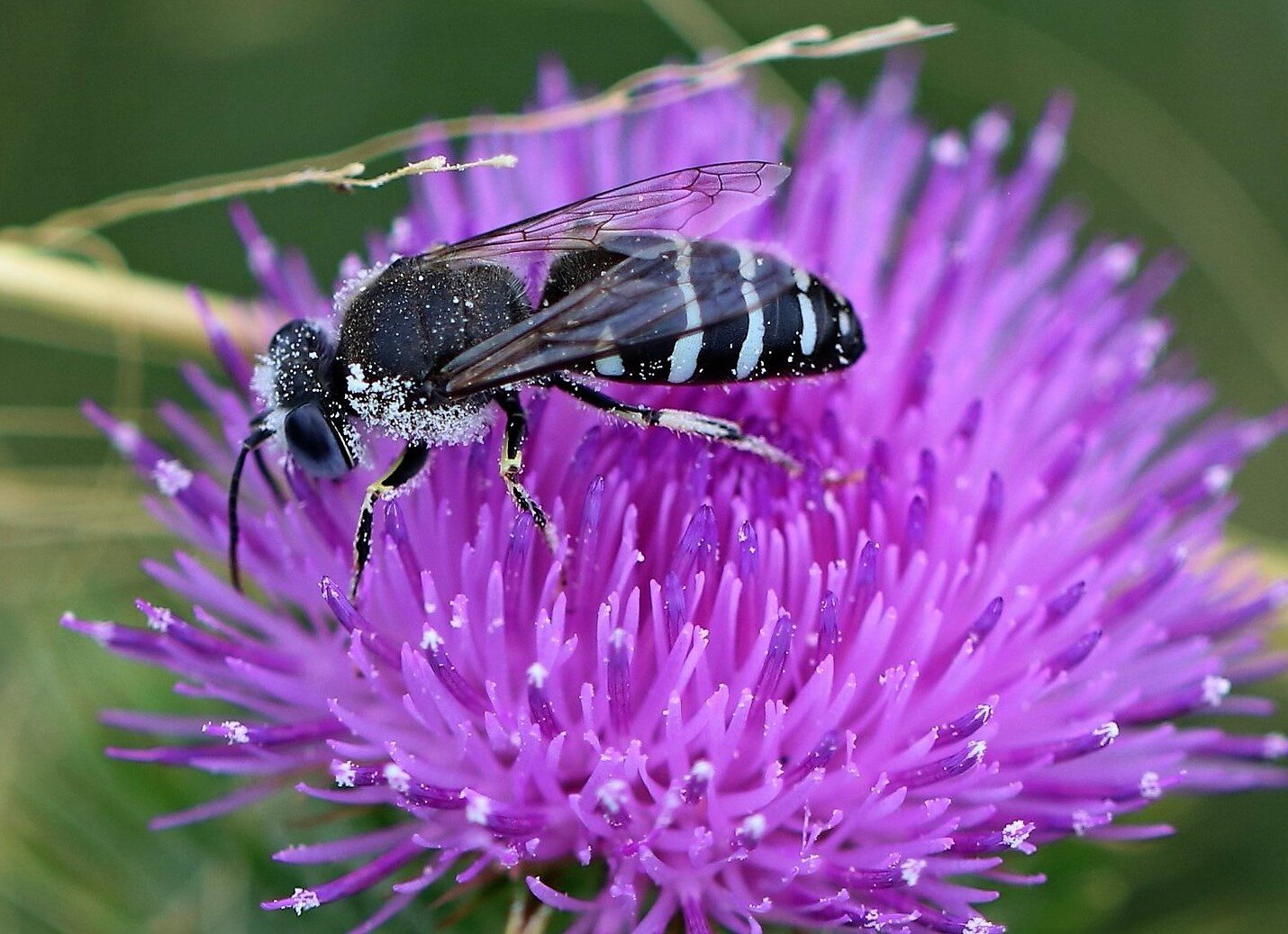
Plant pollination strategies are as diverse as the plants themselves. Ever wondered how flowers get pollinated? Some rely on wind, others on insects, birds, or even bats. Pollination is crucial for plant reproduction, ensuring the transfer of pollen from one flower to another. Without it, many plants couldn't produce fruits or seeds. Did you know that bees are responsible for pollinating about 75% of the crops we eat? Or that some plants have evolved to attract specific pollinators with unique colors, scents, or shapes? Understanding these strategies helps us appreciate the intricate relationships in nature. Let's dive into 50 fascinating facts about how plants achieve pollination!
Key Takeaways:
- Plant pollination is essential for plant survival and reproduction. It involves various strategies, from self-pollination to animal and wind pollination, each playing a unique role in the process.
- Human activities, climate change, and technological innovations impact plant pollination. Conservation efforts and personal actions are crucial in protecting pollinators and ensuring food security worldwide.
What is Plant Pollination?
Pollination is the process by which plants transfer pollen from the male part (anther) to the female part (stigma) to produce seeds. This essential mechanism ensures the survival and reproduction of plant species. Let's dive into some fascinating facts about plant pollination strategies.
-
Self-Pollination: Some plants can pollinate themselves without needing external agents. This method ensures reproduction even in isolated environments.
-
Cross-Pollination: Many plants rely on pollen from another plant of the same species. This increases genetic diversity, making plants more resilient to diseases.
Animal Pollinators
Animals play a crucial role in the pollination process. They help transfer pollen as they move from flower to flower, often in search of nectar.
-
Bees: Bees are the most well-known pollinators. They have hairy bodies that trap pollen, which they carry to other flowers.
-
Butterflies: These insects are attracted to brightly colored flowers. Their long proboscis allows them to reach deep into flowers for nectar.
-
Birds: Hummingbirds and other nectar-feeding birds pollinate flowers while feeding. Their long beaks and tongues are perfect for accessing nectar.
-
Bats: In tropical regions, bats pollinate night-blooming flowers. These flowers are often white or pale to stand out in the dark.
Wind and Water Pollination
Not all plants rely on animals for pollination. Some use the wind or water to move pollen.
-
Wind Pollination: Grasses, trees, and many crops use wind to disperse pollen. These plants often produce large amounts of lightweight pollen.
-
Water Pollination: Aquatic plants like eelgrass release pollen into the water. The pollen floats until it reaches another flower.
Unique Pollination Strategies
Some plants have developed unique methods to ensure successful pollination.
-
Trap Flowers: Certain plants, like the Dutchman's pipe, trap insects temporarily. The insects pick up pollen while inside the flower.
-
Explosive Pollination: Some plants, like the touch-me-not, have flowers that burst open, flinging pollen into the air.
-
Mimicry: Orchids often mimic the appearance and scent of female insects. Male insects attempt to mate with the flower, inadvertently picking up pollen.
Human Impact on Pollination
Human activities can significantly affect pollination processes, both positively and negatively.
-
Pesticides: Chemicals used in agriculture can harm pollinators. Reducing pesticide use helps protect these essential creatures.
-
Habitat Destruction: Urbanization and deforestation reduce the habitats available for pollinators. Creating green spaces can help mitigate this.
-
Pollinator Gardens: Planting a variety of flowers can attract and support pollinators. Native plants are especially beneficial.
Climate Change and Pollination
Climate change is altering the timing and success of pollination.
-
Shifts in Bloom Time: Warmer temperatures can cause plants to bloom earlier. This can lead to mismatches between flowers and their pollinators.
-
Range Shifts: As temperatures rise, some pollinators move to cooler areas. This can leave plants without their usual pollinators.
-
Extreme Weather: Droughts, floods, and storms can disrupt pollination. Plants and pollinators may struggle to survive these conditions.
Technological Innovations in Pollination
Advances in technology are helping to support and enhance pollination.
-
Robotic Pollinators: Scientists are developing tiny robots to assist with pollination. These could help in areas where natural pollinators are declining.
-
Pollen Drones: Drones equipped with pollen dispensers can pollinate crops. This technology is still in the experimental stage but shows promise.
-
Genetic Engineering: Researchers are exploring ways to create plants that are more attractive to pollinators. This could help boost crop yields.
Cultural Significance of Pollination
Pollination has played a role in human culture and mythology for centuries.
-
Ancient Symbols: Bees and flowers appear in ancient art and literature. They often symbolize fertility and renewal.
-
Pollination Festivals: Some cultures celebrate pollination with festivals. These events highlight the importance of pollinators in agriculture.
-
Folklore: Many myths and legends feature pollinators. For example, the ancient Greeks believed bees were messengers of the gods.
Conservation Efforts
Efforts are underway worldwide to protect pollinators and their habitats.
-
Pollinator Pathways: These are corridors of flowers and plants that provide food and shelter for pollinators. They connect fragmented habitats.
-
Bee Hotels: These structures provide nesting sites for solitary bees. They can be made from wood, bamboo, or other materials.
-
Legislation: Some countries have laws to protect pollinators. These regulations can limit pesticide use and promote habitat conservation.
Fun Facts About Pollination
Pollination is full of surprising and fun facts that highlight the complexity and beauty of nature.
-
Vanilla Orchids: Vanilla comes from an orchid that requires hand pollination. This labor-intensive process makes vanilla one of the most expensive spices.
-
Fig Wasps: Figs are pollinated by tiny wasps that enter the fruit. The relationship between figs and wasps is a fascinating example of mutualism.
-
Corpse Flower: This plant emits a smell like rotting flesh to attract pollinators. The odor lures in flies and beetles.
-
Buzz Pollination: Some bees use vibrations to release pollen from flowers. This technique is called buzz pollination.
-
Clever Cacti: Some cacti have flowers that only open at night. They rely on nocturnal pollinators like moths and bats.
-
Color Cues: Flowers use color to attract specific pollinators. Red flowers often attract birds, while blue and purple flowers attract bees.
-
Scent Signals: Many flowers release scents to lure pollinators. These scents can be sweet, spicy, or even foul.
-
Shape Matters: The shape of a flower can determine its pollinator. Tubular flowers are perfect for hummingbirds, while flat flowers suit butterflies.
-
Nectar Guides: Some flowers have patterns that guide pollinators to the nectar. These guides are often visible only under UV light.
-
Temperature Tricks: Certain flowers can regulate their temperature. This makes them more attractive to cold-blooded pollinators.
-
Sticky Pollen: Some plants produce sticky pollen that clings to pollinators. This ensures the pollen is carried to another flower.
-
Pollen Baskets: Bees have special structures on their legs called pollen baskets. They use these to collect and transport pollen.
-
Double Duty: Some pollinators, like bees, also help plants by spreading seeds. This dual role makes them even more valuable.
-
Pollinator Preferences: Different pollinators prefer different flowers. Understanding these preferences can help in designing gardens and farms.
-
Seasonal Shifts: Pollinators and plants often have synchronized life cycles. Changes in climate can disrupt this timing.
-
Migratory Pollinators: Some pollinators, like monarch butterflies, migrate long distances. They rely on specific plants along their route.
-
Pollinator Decline: Many pollinator species are in decline. Habitat loss, pesticides, and climate change are major threats.
-
Citizen Science: People can help track pollinator populations through citizen science projects. This data is valuable for conservation efforts.
-
Educational Programs: Schools and communities are teaching about the importance of pollinators. These programs inspire the next generation of conservationists.
-
Pollinator Partnerships: Organizations are working together to protect pollinators. These partnerships include farmers, scientists, and policymakers.
-
Urban Pollinators: Cities can be surprisingly good habitats for pollinators. Urban gardens and parks provide food and shelter.
-
Pollinator Health: Healthy pollinators are essential for successful pollination. Providing diverse food sources helps keep them strong.
-
Global Impact: Pollination affects food security worldwide. Many crops depend on pollinators for fruit and seed production.
-
Personal Action: Everyone can help pollinators. Planting flowers, reducing pesticide use, and supporting conservation efforts make a difference.
The Magic of Plant Pollination
Plant pollination strategies are fascinating. From wind-pollinated grasses to insect-pollinated flowers, nature's methods are diverse and effective. Bees, butterflies, birds, and even bats play crucial roles in this process, ensuring plants reproduce and thrive. Some plants have evolved unique ways to attract specific pollinators, like the bright colors and sweet nectar of flowers.
Understanding these strategies helps us appreciate the intricate relationships in ecosystems. Protecting pollinators is vital for maintaining biodiversity and food security. Simple actions like planting native flowers and reducing pesticide use can make a big difference.
Next time you see a bee buzzing around or a flower blooming, remember the incredible journey of pollination happening right before your eyes. Nature's brilliance is all around us, working tirelessly to keep our world vibrant and alive.
Frequently Asked Questions
Was this page helpful?
Our commitment to delivering trustworthy and engaging content is at the heart of what we do. Each fact on our site is contributed by real users like you, bringing a wealth of diverse insights and information. To ensure the highest standards of accuracy and reliability, our dedicated editors meticulously review each submission. This process guarantees that the facts we share are not only fascinating but also credible. Trust in our commitment to quality and authenticity as you explore and learn with us.


